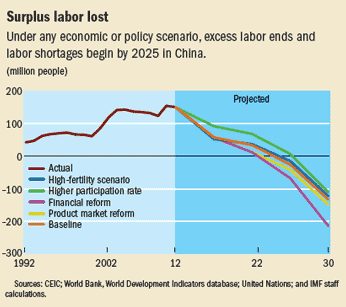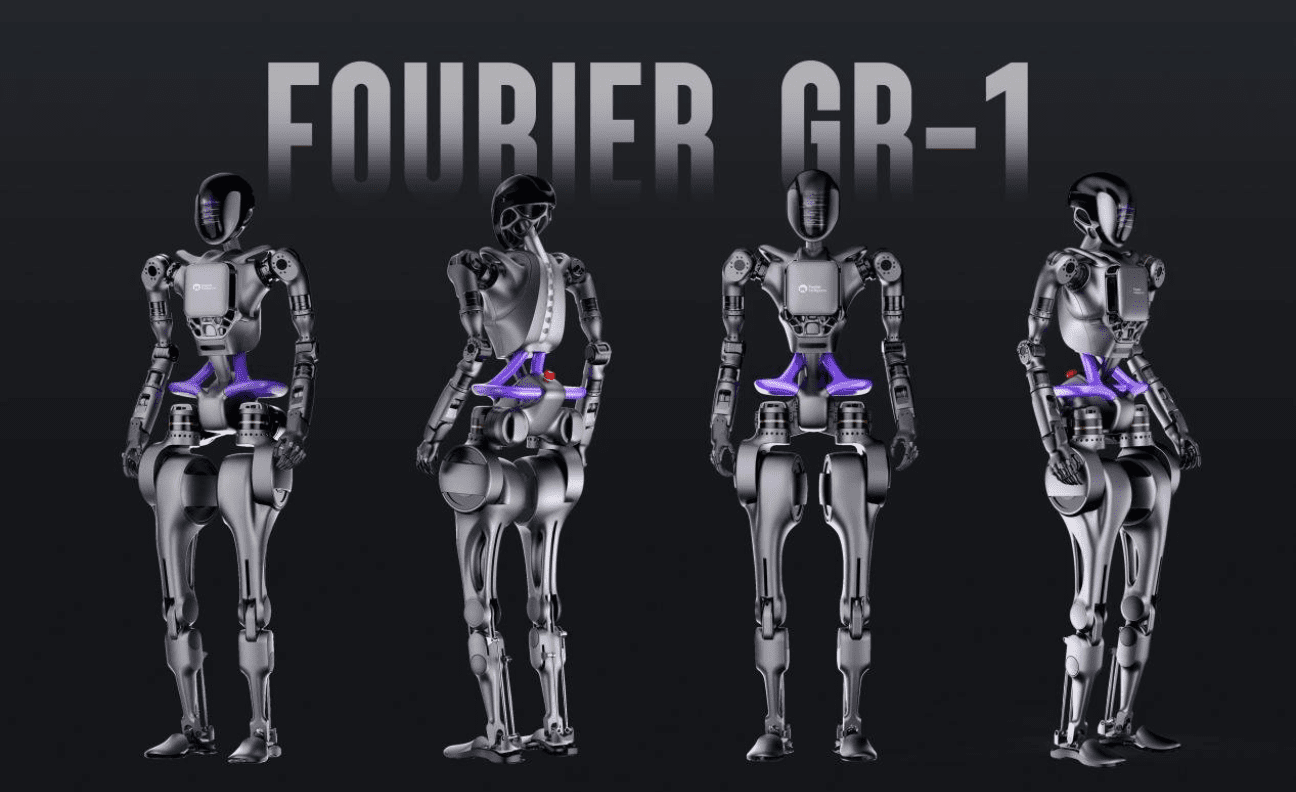In China, the elderly population is projected to surge from 280 million to over 400 million by 2035, according to estimates from the country’s National Health Commission.
With this demographic shift comes a rising demand for medical services, posing a significant challenge amidst labour shortages.
Addressing this concern head-on, Shanghai-based firm Fourier Intelligence is breaking new ground in healthcare automation with the development of their innovative humanoid robot, GR-1.
The GR-1 Humanoid: The Future of Healthcare Assistance
The GR-1 humanoid, standing at an impressive 1.64 metres tall and weighing 55 kilograms, is a remarkable creation that promises to revolutionise the way medical services are delivered.
The cutting-edge robot is being designed to seamlessly carry patients from their beds to wheelchairs, providing much-needed support in healthcare facilities. This breakthrough comes at a critical time when medical professionals are grappling with a labour shortage, and the demand for caregivers and healthcare aides is at an all-time high.
Zen Koh, the CEO and Co-founder of Fourier Intelligence, envisions a future where the entire GR-1 can act as a caregiver, therapy assistant, and even a companion for elderly individuals who live alone.
#Job to #Robot: #Shanghai Fourier #Intelligence Co. Ltd. GR-1: First Mass Produced #Humanoid Robot intended for the #rehabilitation of #patients.#Robots looking for #job #RehabRobot #PatientCare #HumanoidRobot #futuretech #emergingtech #ml #futuretech #aiart #ai #robotart #art pic.twitter.com/lkTtCtOb8z
— Job to Robot ( JTR , JobToRob, Jobs to Robots ) (@JobToRob) July 21, 2023
With its advanced artificial intelligence capabilities and the ability to learn from interactions, GR-1 can establish a unique bond with patients, offering not just physical assistance but emotional support as well. This “human touch” element in robotic caregiving marks a significant leap forward in the realm of healthcare automation.
Furthermore, the robot’s versatility and advanced capabilities have sparked great excitement within the industry. Besides carrying patients, GR-1 can walk with an uncanny sense of balance, allowing it to navigate through tight spaces and avoid obstacles with ease.
Additionally, it can also perform everyday tasks like holding bottles, bringing a glass of water to a patient’s lips, and helping with mealtimes, further enhancing its value as a practical healthcare assistant.
A Leap Forward in Robotics Technology
The GR-1’s design showcases the cutting-edge engineering prowess of Fourier Intelligence. Its state-of-the-art programmable arms enable it to deftly pick up utensils, tools, and perform various tasks as required by its engineers.
Moreover, the company has invested significant resources into perfecting the robot’s dexterity, allowing it to handle delicate medical instruments with precision, paving the way for more intricate medical procedures assisted by robotics.
Koh has proudly asserted that the robot is designed to achieve self-balance walking, making it stable and secure during patient transfers, while the engineers at Fourier Intelligence have also equipped the GR-1 with the capability to sit, stand, and even jump, broadening its potential applications beyond healthcare.
What’s even more interesting, industries like logistics, manufacturing, and customer service could benefit from GR-1’s adaptability and agility in navigating diverse environments.
Though it’s still in its research and development (R&D) phase, Fourier Intelligence aims to unveil a working prototype within two to three years, with the initial focus being to release 100 units of GR-1 by the end of this year, primarily targeting robotic R&D laboratories.
This controlled introduction of GR-1 into such settings will allow the developers to gather valuable feedback and refine the robot’s performance before widespread deployment.
GR-1’s Impact on Robotics Research and Beyond
What sets GR-1 apart is its potential to become the world’s first mass-produced humanoid robot. The widespread availability of GR-1 is expected to foster a vibrant ecosystem of research and innovation.
Roboticists, engineers, and scientists worldwide will have access to this advanced platform, spurring groundbreaking research in various fields, from healthcare and rehabilitation to AI and human-robot interaction.
Furthermore, the unveiling of GR-1 at the prestigious World AI Conference in Shanghai was a momentous event, where it shared the stage with Tesla‘s humanoid robot prototype, Optimus, and other AI marvels from Chinese firms.
Unsurprisingly, this gathering of industry leaders and robotics enthusiasts provided an invaluable opportunity to exchange ideas and foster collaboration on the future of humanoid robotics.
Beyond Healthcare: Robotics for a Safer World
While GR-1 represents a significant stride in healthcare automation, it is not the only pioneering effort in the field of robotics showcased at the World AI Conference. Among the impressive lineup was X20, a quadrupedal robot developed by DEEP Robotics, designed to replace humans in performing hazardous tasks, such as toxic gas detection.
With such robots assuming dangerous roles in the future, human lives can be safeguarded, marking a profound shift in industries with high-risk environments.
Qian Xiaoyu, marketing manager of DEEP Robotics, shared the company’s aspirations to liberate people from dreary and perilous work through the development of advanced robotic applications.
Besides toxic gas detection, the company has envisioned X20 being deployed for emergency rescue and fire detection in the future, a feat that poses considerable technical challenges.
Potential Disadvantages to Humanoid Robotics
Humanoid robots, such as GR-1, offer remarkable potential in various fields, like healthcare. However, they come with potential disadvantages and challenges.
High costs and limited affordability may hinder their widespread adoption, and their deployment could lead to possible job displacement for certain roles. Also, ethical considerations could arise regarding caregiving and decision-making responsibilities, while data privacy and security become concerns due to their sensory capabilities.
Furthermore, technical limitations and dependence on technology may risk overlooking human skills and expertise, while proper regulations are also crucial in maintaining safe and ethical use.
Also, social acceptance may be an issue that may take quite some time, as convincing people to trust robotic caregivers still remains a bit of a challenge. Additionally, addressing any biases and ensuring proper maintenance support are all essential for overall successful integration.
However, despite these challenges, if careful research is conducted and public dialogue can be obtained, it could lead to a harmonious future with humanoid robots as valuable partners in various industries.

Conclusion
As China grapples with the challenges posed by an ageing population, Fourier Intelligence’s GR-1 emerges as a beacon of hope, offering a potential solution to the rising demand for medical services. The humanoid robot’s ability to carry patients, perform tasks, and even provide companionship holds the promise of revolutionising healthcare assistance in the future.
Furthermore, beyond its applications in healthcare, the GR-1 is set to carve a path for the future of robotics. The company’s unwavering commitment to technological advancement and their development of humanoid robots like GR-1 highlights the transformative potential of AI-driven machines.
Moreover, with the visionary efforts of companies like Fourier Intelligence and the ever-evolving landscape of robotics technology, a new era of automation and assistance is dawning, one where humans and robots unite to create a safer, healthier, and more harmonious world.
Ultimately, the journey towards a future enriched by the presence of advanced robotic companions has only just begun, but the possibilities are shaping up to be as boundless as the human imagination.









